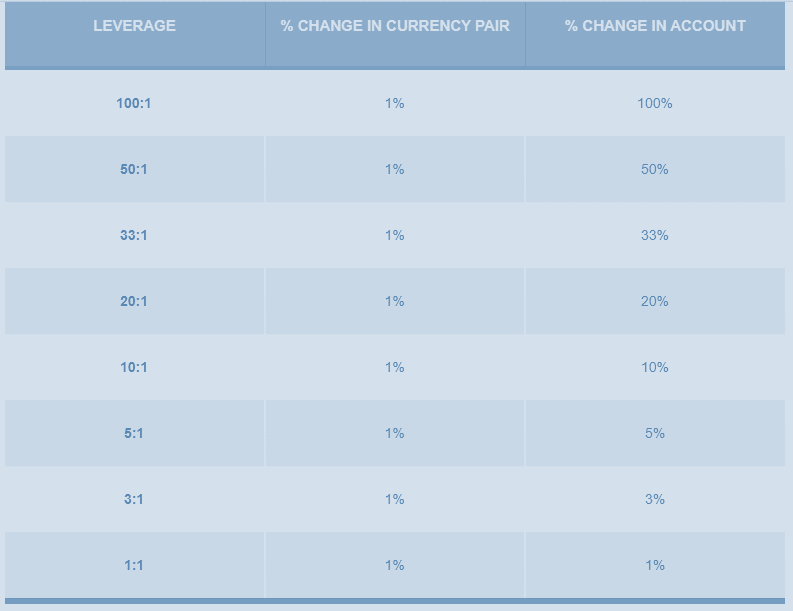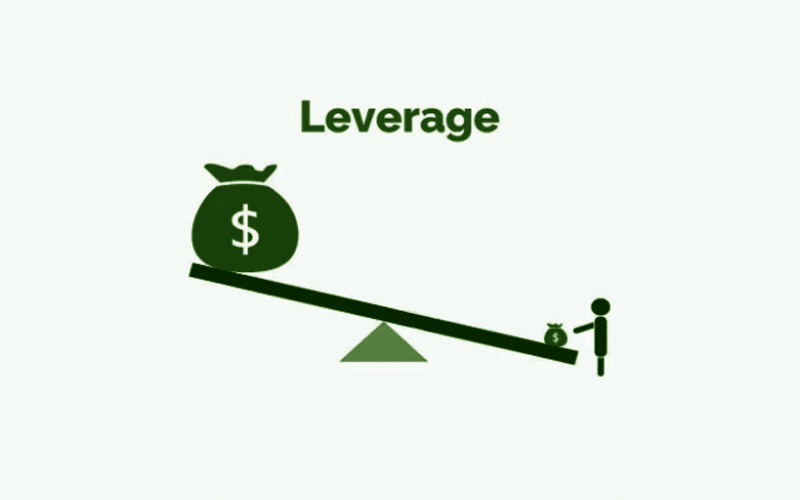Leverage can be best described as a tool that is used to increase the purchasing power of a trader’s deposit. This is funded by the broker’s liquidity provider or the broker itself. Higher the leverage, the more funds one can invest. Together with the right lot size and trade size, leverage can be used a trader’s best friend, or enemy, depending on the action he or she takes.
What is leverage in the FX market?
When it comes to the FX market, leverage is one of the best benefits of this market. Currency pairs can often have a leverage ratio of up to 500:1. For instance, you do not require $10000 in your trading account to trade EUR/USD. With leverage you can just invest $250, a mere small amount, to control a $10,000 position.
Trading on leveraged capital will allow you to trade amounts significantly greater than what you initially invested in, which serves as the margin. Potential return can significantly increase with higher leverage, but this also increases potential losses. Leverage is normally expressed as a ration, such as 1:50, 1:200, and 1:100.
How Low Leverage Assists Traders to Survive?
As mentioned before, not having a clear idea about both the positives and negatives of leverage can be detrimental to your trading success. It’s crucial for you to grasp the concept, as leverage is sometimes called “a double-edged sword”. Thus, when leverage works, it can magnify your gains by a substantial market. But remember, it can always work against you.

The above chart shows how much a trader’s account balance can change if prices move depending on their leverage. The more leverage one uses, the less breathing room they have for the market to move before a margin call. To better understand how one can make a mistake a loose it all, let’s go over some examples.
Trade Example #1
Let’s say you open an account with $5000 in funds, with leverage of 20:1. The currencies that you normally trade can have a movement worth 70-200 pips every day. You use a tight 30 pip stop to protect yourself. However, because of the volatility of this market, you can easily underestimate the situation and end up getting stopped out frequently. After you are stopped out 4 times, you may decide to increase your stops to 100 pips. 26:1 is becoming your new leverage as your account balance decreases to $3800. But you are still trading a single 100k lot.
You then decide to tighter your stops to fifty pips and open another trade using 2 lots. Unfortunately, you lose $1000 after your 50 pip stop loss is hit. Your leverage now stands at 35:1. Not wanting to quit, you again try with two lots. You get a profit of $200 after the market goes up 10 pips, increasing your trading account balance to $3000. After opening another position with 2 lots, you get out after the market drops fifty points.
Finally, you are left with $2000. Because of greed or any other emotion, you decide to open another position. Unfortunately, the market drops 100 pips. Now you have only $1000 margin available which is insufficient to open a new position, since the other $1000 is locked up as a deposit. After receiving a margin call, your entire amount is lost
Thus if your trading practices mimic that of the example given above, you would have lost 80%($4000) in a span of eight trades. However, the market has just moved 280 pips, which happens pretty often.
Trade Example #2
You have opened a mini account with $1000 in funds, and which trades 20k mini lots. It requires a small margin of 5%. You go ahead and purchase two mini lots of EUR/USD. Your true leverage now becomes 40:1 ($40000/$1000). After you place a stop loss of thirty pips, it gets triggered. The loss here is $60, which means you have a 6% loss in your account.
Your account balance becomes $940. Thinking that things will turn positive the next day, you decide to double up and buy 4 mini lots of EUR/USD. Now, your true leverage becomes approximately 90:1. After setting up a 30 pip stop-loss, your trade losses and you incur a loss of $120. Eventually, it may so happen that you incur a loss which equals 70% of your account.
Since a losing streak in forex is not uncommon, the best way a trader can protect themselves is by using low leverage. Most experienced traders limit their leverage at 5:1 but rarely go that high. They prefer to stay around 3:1. Thus, the best way to ensure that you succeed as a forex trader is to sufficiently capitalize on your account and trade that capital with small leverage. Low leverage coupled with proper capitalization, thus allowing a trader to realize smaller losses, allowing them to trade another day.
How to Calculate Forex leverage?
The leverage ratio is determined by the notional value of the contract which uses the base currency which is usually the nation’s domestic currency. Only the leverage gets quoted, as its denominator is always 1. The amount of leverage allowed determines the amount of margin one must maintain. It is inversely proportional to margin, as is evidenced by the following calculations.
Leverage = 1/ Margin = 100/Margin Percentage
Example: if our margin is 0.02, the margin percentage is 2%. Therefore, leverage = 1/0.02= 100/2= 50.
Margin =1/ Leverage
Example: A leverage ratio of 50:1 gives us a margin percentage of 1/50= 2%
Final Thoughts
At present, most forex brokers offer a very high leverage ratio or in other words, have margin requirements that are low. This is the reason why profit and losses in these markets vary so greatly despite the prices of currencies not changing that much. This makes lower margin requirements a lot less risky. The only risk here is when you are subject to margin calls which usually happens when currency exchange rates change rapidly.
